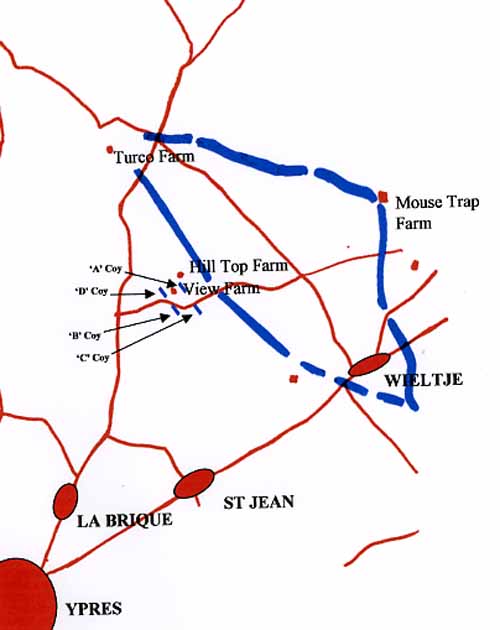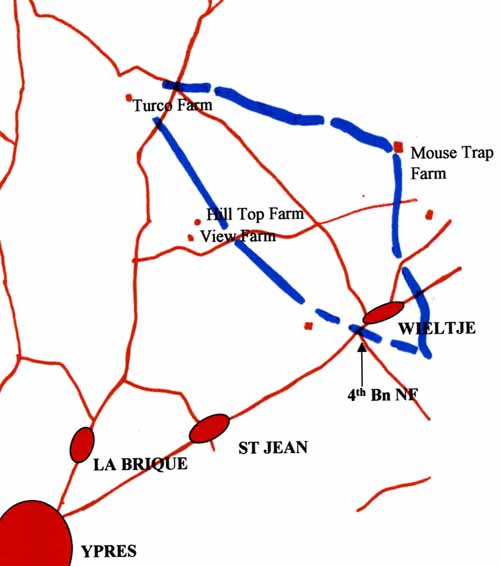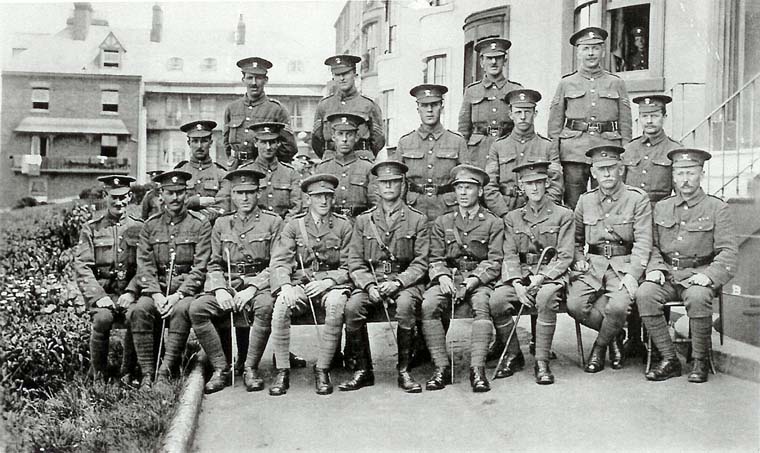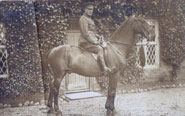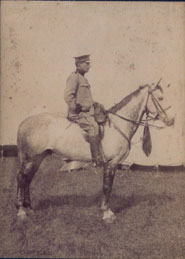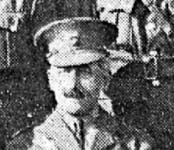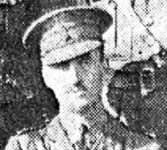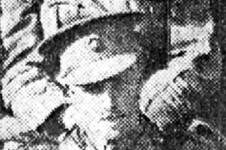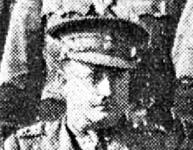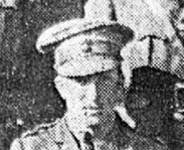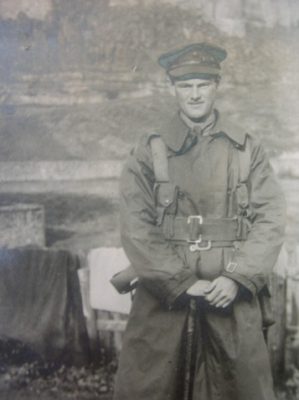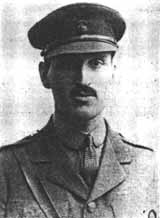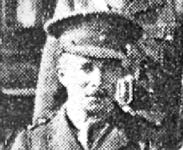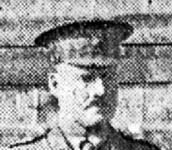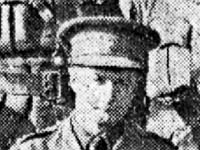Summary of events
With the exception of the 4th Bn (ordered to move to the old German line north of Beaurains) and two sections of the 149th MGC who were to support the attack of the 150th Bde, the 149th Bde was to remain in billets at Ronville 2 and Guemappe 3 was taken. The 4th Bn reached Buck Trench 4, and the Divn frontline was advanced to a point not far from the outskirts of Cherisy 5. HQ was established at Telegraph Hill 6
23rd April 1917 (St Georges Day)
At 4.15am the front line Bns were reported in position. The 150th Bde attack was to be carried out by the 4th Bn East Yorkshires on the right and the 4th Bn Green Howards on the left. Five minutes before Zero hour two tanks nosed their way to the front and moved slowly in a north-westerly direction.
At 8am the Bn moved forward again to the O.G. 1st line (map ref: N.5.b) and remained there during the day at half an hour notice. The Bn moved forward at five minutes notice at 7.45pm to the Brown Line 7 and for tactical purposes came under the orders of the GOC 151st Bde.
During the early morning of the 24th the 151st Bde relieved the 150th Bde, who moved back into reserve in the Harp area 8; the 4th Bn were attached to the 151st Bde, the remainder of the 149th being in support.
At about 11.30am, the enemy was reported retiring in front of the 30th Divn, and the GOC of the 30th Divn stated that he was going to push on to the Blue line 9.
Wancourt
The Bn moved forward from the Brown Line under the orders of the 151st Bde. ‘B’ Coy were sent forward to the front line and came under the orders of the 5th Bn DLI. They dug and occupied a new trench connected to the right flank of the 9th Bn DLI. Their covering party captured four Germans. No contact was made on the right flank until 3pm at which time communications were established with the 5th Bn Border Regt who were to the rear and slightly right of them. The 5th Bn Borders agreed to come forward at night and dig and occupy a trench that would be connected with ‘B’ Coy on the left.
‘A’, ’C’ and ‘D’ Coys and Bn HQ arrived at the old British front line north of Wancourt Tower (dispositions as per sketch) 2.30am. Rations were brought up to the 5th Bn Border HQ in the Long Lane 10 and brought up to ‘A’, ‘D’ and HQ by ‘C’ Coy. There was insufficient time to deliver rations to ‘B’ Coy before daylight so the men had to consume their second lot of iron rations. ‘B’ Coy were subjected to continuous, heavy shellfire and persistent sniping. 2nd Lt R Johnson and five men were killed and 16 men were wounded.
('B' Coy or the Bn) Lewis Guns identified good targets at ranges varying round 1000 yards and inflicted several casualties on the enemy. One Lewis gun was destroyed by shellfire. The areas occupied by the remaining Coys were also subjected to considerable artillery fire, which was especially violent between 2.30am and 7am and again between 1.30pm and 2pm. No direct hits were obtained on the trench and no casualties were sustained in this line during daylight.
2pm A part of ten stretcher-bearers and ten men were sent out to collect wounded still lying on the battlefield.
The GOC 151st Bde was instructed to advance at 4pm under an artillery barrage. But, meanwhile, the 30th Divn had already reached the Blue line, and was digging in on it, and the 151st Bde was, therefore, ordered to conform immediately to the movement of the 30th Divn. The 5th Borders Regt swung up their right flank and obtained touch at about 4pm. But the 9th DLI, in the centre, with a Coy of the 4th Bn attacked, and had a sharp tussle with the enemy before occupying the Blue Line 11. (50th Divn)
3pm ‘B’ Coy under 9th Bn DLI orders (2.25pm) went forward one platoon to reconnoitre and capture an enemy trench 600 yards long astride the railway. The platoon captured the trench sustaining three casualties in the process.
Bn HQ received Operation Orders at 3.30pm stating that the 15th Divn were advancing on the left and 9th Bn DLI would support their advance with rifle, Lewis Gun and MG fire. Also that they would push forward patrols to reconnoitre and capture the German trench six hundred yards long astride the railway. OC 9th Bn DLI detailed ‘B’ Coy for this work and captured and held the trench as described above.
At 5.22pm 4th Bn HQ received a wire from OC 9th Bn DLI stating that one of the 'B' Coy platoons had just captured an enemy trench (from map ref: O.20.7.6. to O.20.C.1.9) and was holding it. Only three casualties were incurred. Fine piece of work. Lt Col B.D. Gibson and 2nd Lt Burton went forward to reconnoitre the new positions occupied by ‘B’ Coy and ‘A’ and ‘D’ Coys.
Another platoon was sent forward under heavy artillery and machine gun fire to help hold it. Under cover of darkness one more platoon of ‘B’ Coy was sent forward to the trench and three strong points were constructed, two north and one south of the railway. [zotpressInText item="{4R6FADJ9,}"]
10pm ‘A’ and ‘D’ Coys dug a new support trench between the railway and the Cojeul River and occupied it. One machine gun was attached to each Coy. At 10.30pm Bn HQ moved to a dugout at the old German gun pits at the north end of old German support line between Cojeul River and the railway. ‘C’
2nd Scarpe - Military Units
15th (Scottish) Division - Comprised of the 44th, 45th and 46th Infantry Brigades
The 44th Bde - Comprised of the 9th Bn - Black Watch, 8th Bn - Seaforth Highlanders, 8th & 10th Bns - Gordon Highlanders, 7th Bn - Camerons.
The 45th Bde -Comprised of the 13th Bn - Royal Scots, 6th & 7th Bn - Royal Scots Fusiliers, 6th Bn - Camerons, 11th Bn - Argyll and Sutherland Highlanders.
The 46th Bde - Comprised of the 10th Bn - Scottish Rifles, 7th & 8th Bn Kings Own Scottish Borderers, 10th & 11th Bn - Highland Light Infantry, 12th Bn - Highland Light Infantry.
30th Division - Consisted of the 89th, 90th and 91st Bde.
The 89th Bde comprised of the 17th, 18th, 19th and 20th Bns - The Kings Liverpool Regiment
The 90th Bde comprised of the 16th, 17th, 18th and 19th Bns - The Manchester Regiment.
The 91st Bde comprised of the 20th, 21st, 22nd and 24th Bns - The Manchester Regiment.
50th (Northumbrian) Division Consisted of the 149th (Northumberland) Bde, 150th (York & Durham) Bde and 151st (Durham Light Infantry (DLI)) Bde.
The 149th Bde comprised of the 1/4th, 1/5th, 1/6th and 1/7th Bn Northumberland Fusiliers
The 150th Bde comprised 1/4th Bn East Yorkshires, 1/4th Bn Green Howards, 1/5th Bn Green Howards and 1/5th Bn Durham Light Infantry
The 151st Bde comprised the 1/6th, 1/8th, 1/9th Bn - DLI and 1/5th (Cumberland) Bn - Border Regt.
149th MGC -
Bibliography
[zotpress items="HUXKQ9EA" style="harvard1"]
[zotpress items="4R6FADJ9" style="harvard1"]
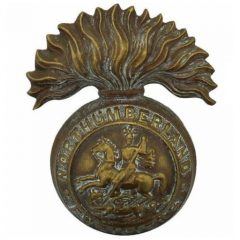
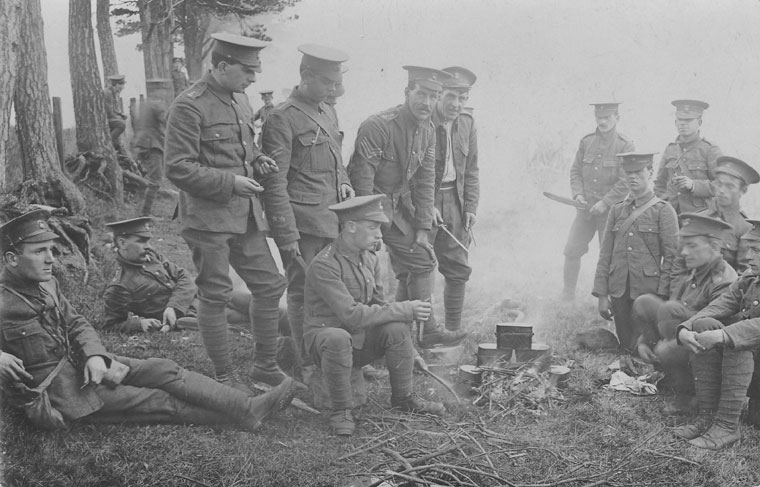
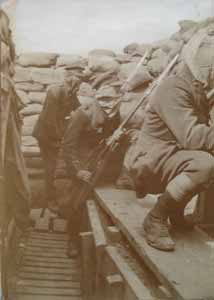 'We moved off about 5am, there having been no time for breakfast and most of us had to go with our water bottles empty, as the water carts were not up, and the water at the farm near at hand had been condemned' [zotpressInText item="{6C9UZ7VX}"].
'We moved off about 5am, there having been no time for breakfast and most of us had to go with our water bottles empty, as the water carts were not up, and the water at the farm near at hand had been condemned' [zotpressInText item="{6C9UZ7VX}"].